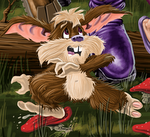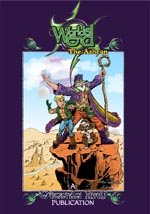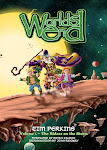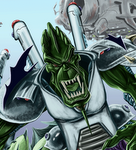The flow and rhythm in the process of Storytelling
Hi Guys,
I have been involved in this same conversation that I am sharing with you guys today, several times in the last few years.
I have always believed that the story will write itself and end when it is finished, not at some pre-appointed page. That said the publisher may have certain page counts, and/or word counts in mind when commissioning a book, due to the format, size and budget of the book in question.
The beauty of me controlling all the aspects of publishing nowadays, with my graphic novels, outside of the constraints of Marvel, DC and other major comics publishers and book publishers means the stories can unroll naturally and I do not have to conform to the decompressed style of storytelling prevalent nowadays in US comics, or indeed fit it into a page count needed for a story arc to be later collected into a trade paperback, or hard backed edition.
When I am writing a book, again that unfolds as per the needs of the story and also the age group. Thus I am aware of being more concise when writing a children’s book as against a novel.
I have to admit that my working in comic books as made me aware of being able to write in concise ways driving the story forward without having to write reams of unnecessary prose to do so. It is the same with the illustration side of things, as I am able to control how much, or how little is needed to convey the mood, atmosphere, tension and space for dialogue through the relationship of words and artwork and the pacing of the storyline(s).
I have found you develop a gut feeling as to when the art is finished and so too the writing of the story. Comics have certainly also made me totally aware of what is needed for driving a story forward, whether it is inside of a comic, graphic novel, magazine piece, novel, children’s book, or TV/film/animation script and as to what can be left out.
Sometimes the comic writer will write down every single thing and leave nothing to the imagination of the reader, which sometimes alienates the artist from having a totally immersed and yet involved experience. The same is sometimes the case with the editors as well as writers many of whom nowadays think that the text is more important that the graphical side of comics. A viewpoint I totally disagree with. The most important thing in a great comic is the storytelling and that is both textual and graphical. It is the perfect blending of words and pictures complementing each other to achieve a final creation of beauty.
Leave the visual side of things in the hands of an artist and let their imagination run wild and you get the best work out of them. Constrain them and, or give them all the details and you will see that in the stiffness of the work. Artists are not an extension of a writer’s hand they are, if working as part of a team, of equal importance.
That said, there are artists that prefer to work, or indeed can only work, with the story totally provided by the writer. Most, however, work at their best when asked to bring something along the table.
The first thing ones sees is the cover, then the flipped pages of artwork, if the cover grabs your attention, at least, and then the story is read, if these pages also grab your attention.
For me the story should unfold, as naturally in written format, as it would be if being told to a group of people in a room, or around a campfire – no constraints, except those self-imposed upon the storyteller(s) themselves, made possible by their experience.
Each story has its natural length and will, like a sun, reach a point whereupon it will have expanded to such a point, as to have reached its limit and, if allowed, implode on itself, by which time it will most likely have lost the attention of its reader(s).
If the story is done right it will rise to a crescendo and then slowly let the reader off the ride at the other side of the tale. A beginning, middle and end, with characters, environment and plot all mapped out for the reader to become embroiled with and become wrapped up in totality with the exploits inside the pages of the storylines.
If the answer to the question, “does this person, or action drive the story forward” is no, then neither they nor it needs to be in the tale. Better to take the unnecessary bits out of the story early on as they are superfluous to requirement.
No one wants to be bored to death with unneeded details. There should always be a progression from the start of a story, through as many sub-plots as one deems necessary, to its eventual end.
Which brings me full circle with this little Blog. The story writes itself if it is allowed to. Looking to fit the content of a tale into a certain amount of pages is in itself a constraint. Although as I said earlier this very same process employed by comics companies taught me all about being concise in my storytelling it is, in my opinion, given the option, better to merely let the story unfold itself to you, once you have understood those rules.
Until next time, have fun!
Tim Perkins…
May 14th 2012
Tim Perkins…












































No comments:
Post a Comment